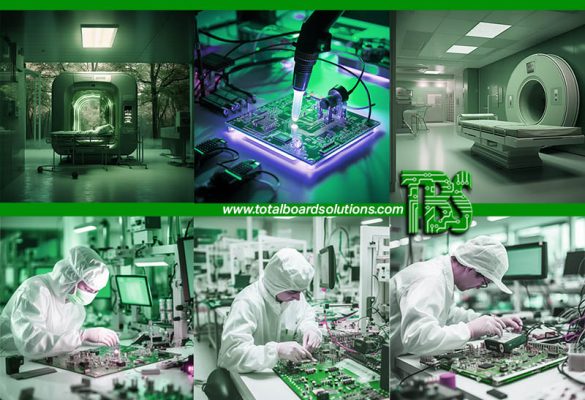Compliance for PCB’s within medical device regulations
In the rapidly evolving landscape of healthcare, PCB Designers play a crucial role in developing medical devices that meet stringent regulatory requirements. The following profiles how compliance for PCB’s within medical device regulations, the design and development process, risk-based classifications, and the benefits of medical electronics in healthcare, highlight the broader role required by good PCB Designers. By understanding these key aspects, designers can ensure that their work aligns with industry standards, fosters innovation, and contributes to the safe and effective delivery of healthcare
We have seen in previous articles the impact of smart electronic design can have on humanity – see Electronic hands that do the talking in sign language, and Bioelectronics – unlocking revolutionary benefits for the future.
When creating anything, it is paramount to understand your product’s markets and the rules and regulations from all the governing bodies. As a plethora of technologically advanced components are installed in many medical devices, enabling detailed diagnoses through products such as, scanning machines and minute keyhole surgeries provided by HD cameras and robotics, making them now indispensable tools for healthcare professionals. Therefore, the role of a PCB Designer becomes integral to creating circuitry that supports the functionality and performance of these devices.

Design and Development Process for Medical PCBs:
The design and development process are a critical phases in ensuring the creation of safe, reliable, and compliant medical devices. During the ideation and conceptualization stages, designers must collaborate closely with engineers (as well as accountants!) to get a fuller brief. This groundwork sets the stage for the subsequent design iterations and development.
Within medical product design adherence to international standards, including ISO 9001 and ISO 13485, is imperative. These standards provide essential guidelines and specifications for medical device manufacturers, ensuring that the products meet stringent quality and safety requirements. By complying with these standards, designers can demonstrate their commitment to producing high-quality PCBs that contribute to the overall safety and efficacy of medical devices.
Understanding Risk-Based Classifications:
Familiarisation with the risk-based classifications of medical devices. For example, The American Food and Drug Authority (FDA) has a 3-level classification system for medical devices based on their level of risk.
Class III devices, which support or sustain life and carry substantial risks, demand the utmost attention in the design process. Implantable devices like heart pacemakers fall into this category. Given the potential for serious injury or illness, designers must approach Class III devices with meticulous care, adhering to rigorous design and manufacturing standards.
Class II devices present higher risks than Class I devices and require additional controls to ensure safety and efficacy. PCB Designers working on Class II devices must familiarise themselves with specific control requirements, such as post-market surveillance and special labelling. The American 510(k) process, involving premarket notification, plays a vital role in approving these devices by verifying their effectiveness and safety.
Class I devices, with low risk and non-life-sustaining functions, encompass a significant portion of the market. Governed by general regulatory requirements for Class I devices, which include adulteration and device registration,
Embracing the Benefits of Medical Electronics in Healthcare:
PCB Designers can fully appreciate the impact of their work by understanding the benefits of medical electronics in healthcare. Modern devices can rely on digital connections to other devices around the world, potentially providing remote monitoring of chronic conditions. By incorporating connectivity features into their designs, designers empower healthcare specialists to monitor and manage patients’ health conditions remotely.
Furthermore, medical electronics enhance accuracy, efficiency, and patient outcomes. New electronic designs can contribute to improved diagnostic accuracy; take MRI imaging systems, for example. So as PCB Designers involved in the design and development process, risk-based classifications, and the benefits of understanding technology governance in healthcare is essential. By aligning their work with industry standards and regulations, designers can be empowered by this knowledge, and pride, as they play a crucial role in transforming healthcare, ensuring the delivery of high-quality care and improving patient outcomes.

